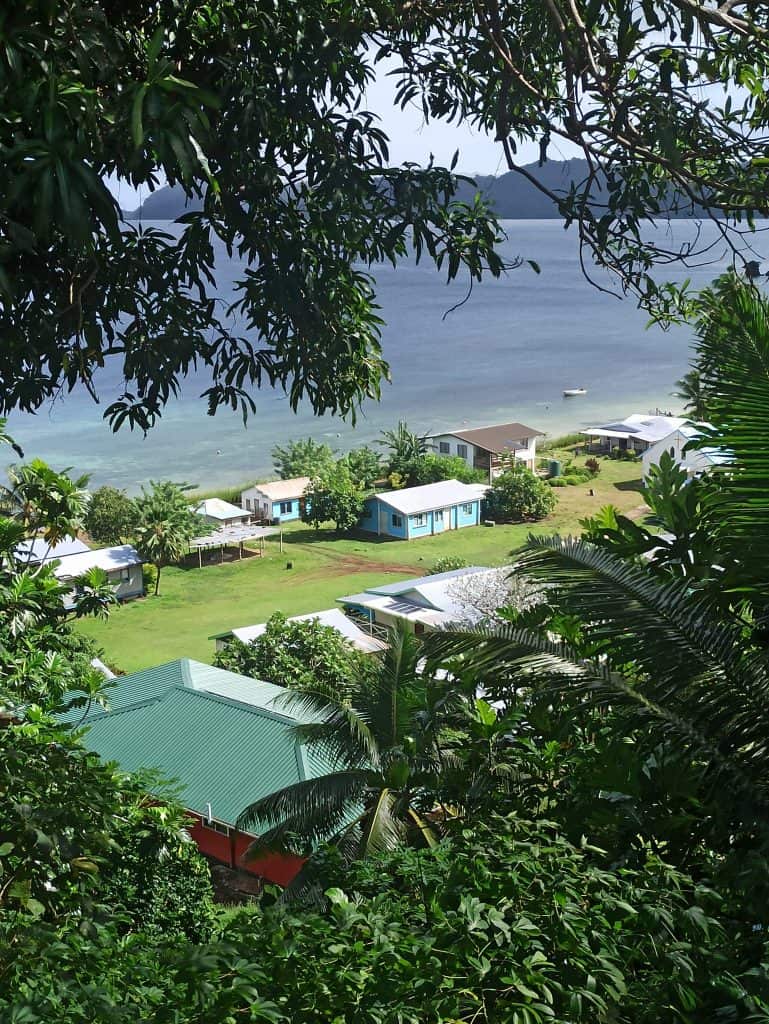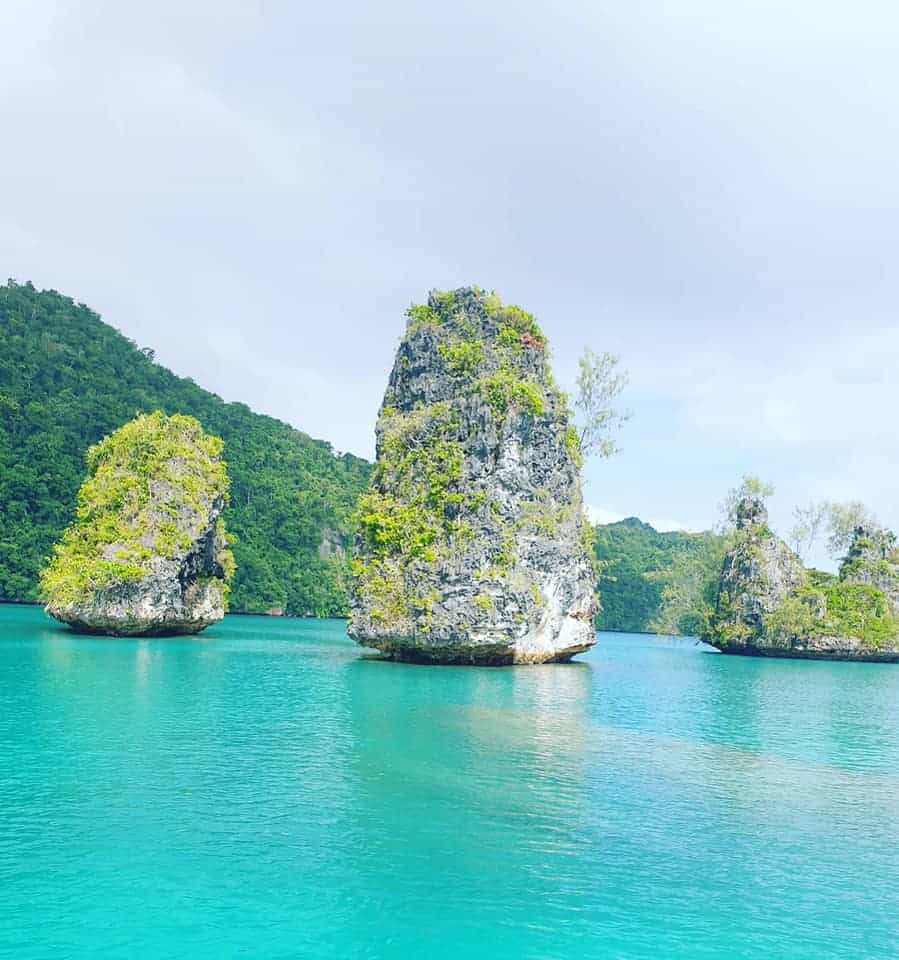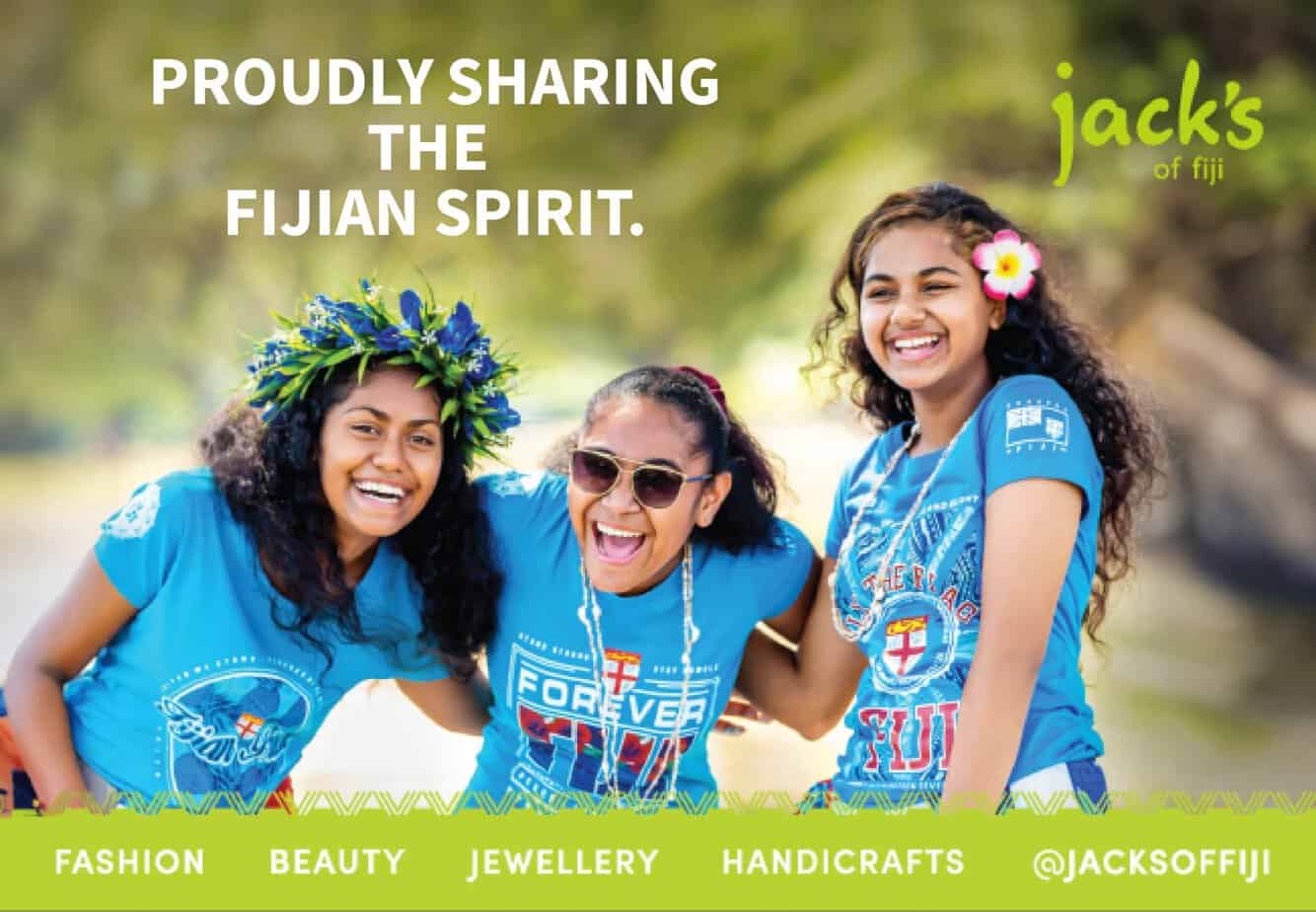By Samisoni Pareti
Located on the northwest tip of Vanuabalavu, Lau, tiny limestone islets— many of them looking more like boulders –litter the bay to make up this natural wonder.
The limestone rocks are secure anchors, and the many narrow channels and sheltered coves form natural anchorage and berthing bays for yachts, motorboats and other pleasure crafts that visit here all year round.
Qilaqila is also renowned for the many caves – underwater and above – that are found along the coastline, especially around the western and southern shorelines of the bay.
These are popular swimming spots too.
For good divers, a must-see is the underwater cave on the bay’s northern shores.
I call the cave ‘The Cathedral’ and you cannot walk, but must dive to enter.
Though the entry tunnel is narrow, you surface into a larger and spectacular cave.
Once your eyes are accustomed to the lack of lights, you will be able to pick out its stalactites and stalagmites, and true to its name, the acoustics are as impressive as in any place of worship.
On the west coast of Qilaqila, you will find the ‘Qara ni Bose’ (The War Room) cave. ‘Qara ni Volayaca’ (The Library) is on the southern shores.
The former is said to be where our ancestral gods used to meet to work out their war strategies.
Qilaqila used to be their battleground.
Enter The War Room and you can see seats carved out of the limestone walls of the cave.
From their seats perched high up, tiny openings reputedly gave the gods a commanding view of Qilaqila passage.
It is all about being strategic, for no enemies’ war canoes can slip into the bay without being noticed.
The Library to the south features names of some early visitors scribbled on its interior walls.
It is believed that these cave wall writings were not an ancient practice, and this practice has since ceased.
If the tour of the limestone caves of Qilaqila does not blow you away, then the varying shades of blue of its waters will.
A boat tour around the bay can take you from pale blue to sapphire waters, sky blue to teal and royal blue to aquamarine.
It is as if the rays of sunshine on the sandy bottom of Qilaqila, together with its colourful soft and not-so-soft corals and flourishing green vegetation on the limestone islets, mix to provide visitors with a cocktail of blue in its many hues.
To the traditional custodians of the Bay of Islands, the people of Daliconi village of chief Tui Daku and his Vusa Waitui clan, Qilaqila is much more than a natural anchorage.
It is tabu, or sacred place, as it was in Qilaqila that their ancestors landed in the search for land hundreds of years ago, for a place they can call their own.
It is in Qilaqila that clan members find their cultural totems.

Their fish totem is the Qio (shark), Macou, of the cinnamon family is their tree totem and the Yalewa ni Qilaqila or Selekoti (Frigatebird) is their bird totem.
Qilaqila is said to be the only locality in Vanuabalavu where Macou trees grow, and the people of Daliconi use its bark as fragrance in body oils.
Other natural attractions of the Bay of Islands include ‘Mocemoce ni Beka (Flying Foxes’ Den) and Vunivuni ni Waqa (war canoe hideout).
Local guides will also be able to point out the locations of the Tobu ni Balagi (Swordfish pool) and the Ba ni Vonu (turtle pool).
The location of the swordfish pool is a natural wonder in itself.
To get to it, you have to hike about five minutes inland from the shoreline.
How these fish breed and swim in a pool several metres above sea land is baffling.
Turtles on the other hand nestle in several sandy beaches in Qilaqila, and it is common to sight turtles in and around the bay.
Local fishermen and women may not easily give away their ‘trade’ secrets, but the Bay of Islands hosts good fishing spots for urau (crayfish), saqa (trevally), kawakawa (grouper) and walu (Spanish Mackerel).
If you enquire, you may also get to swim in the marine park, where Daliconi villagers keep their coral gardens and breed giant clams, with the help of the Fiji Government’s Ministry of Fisheries.
The return of turtles, sting rays and giant clams in waters near Qilaqila has been attributed to the presence of the marine park, which is located in a submerged reef circular in shape that locals call Gutuveimama.
Locals will tell you that pods of whales have been sighted too, usually around the cooler months of July and August.



